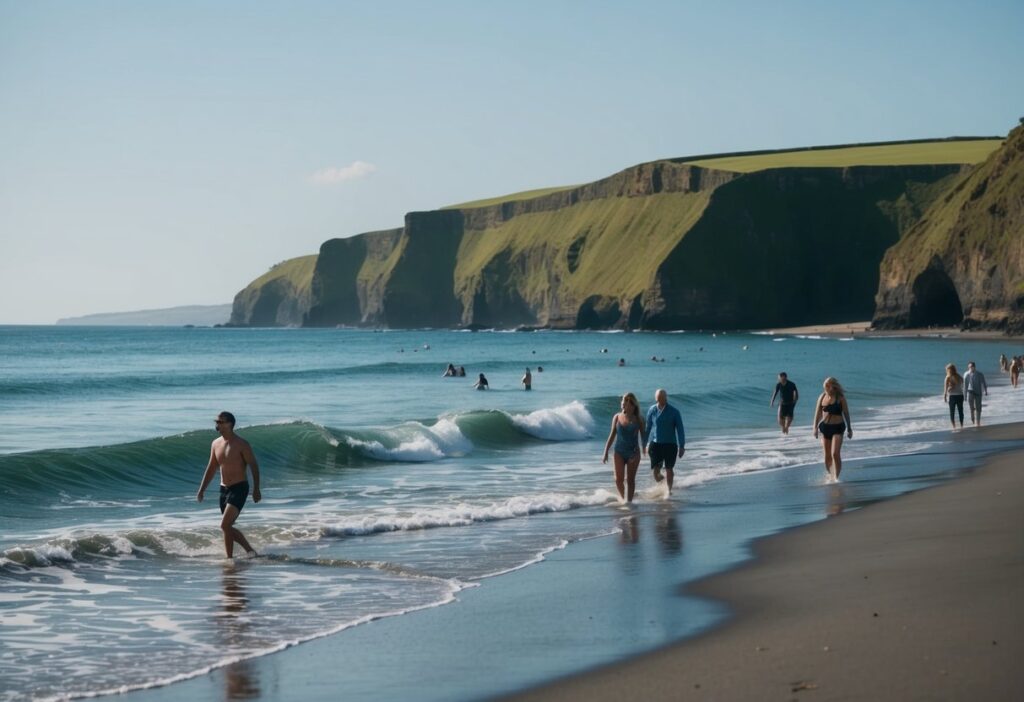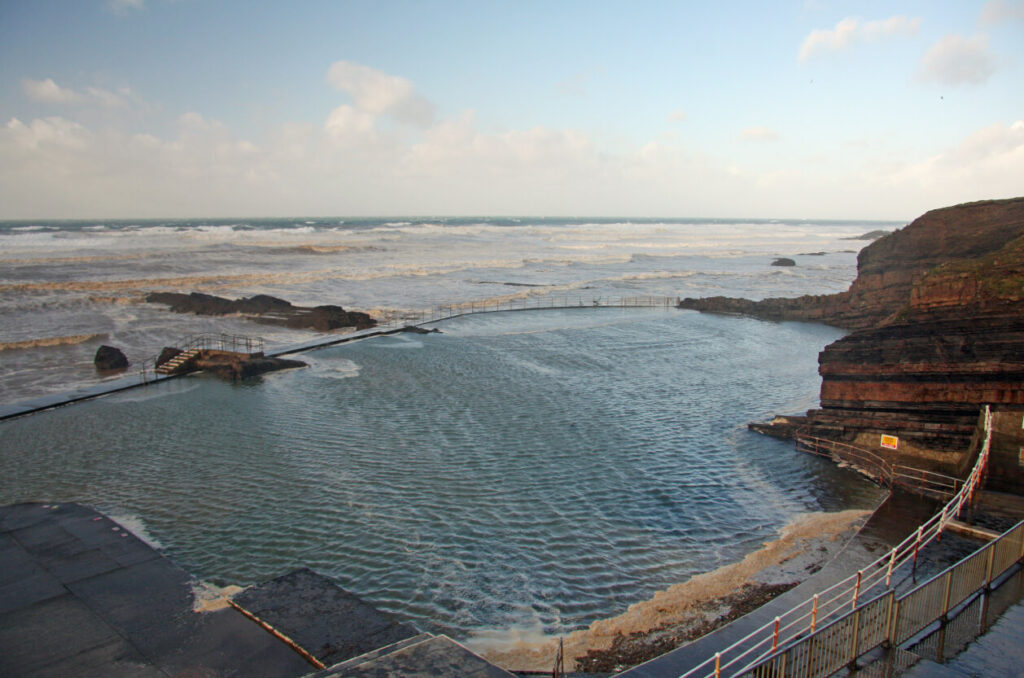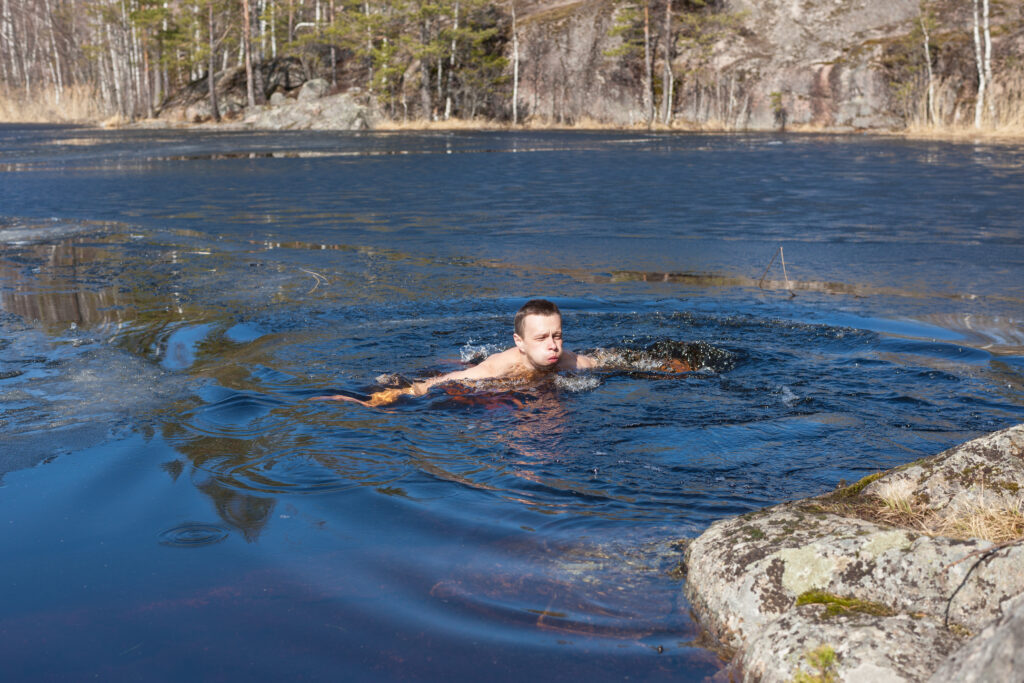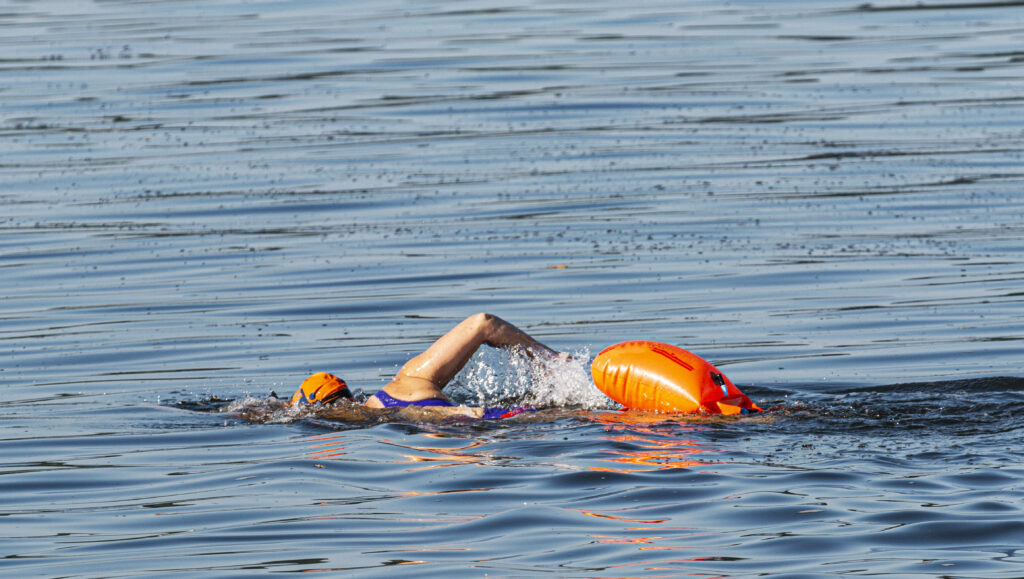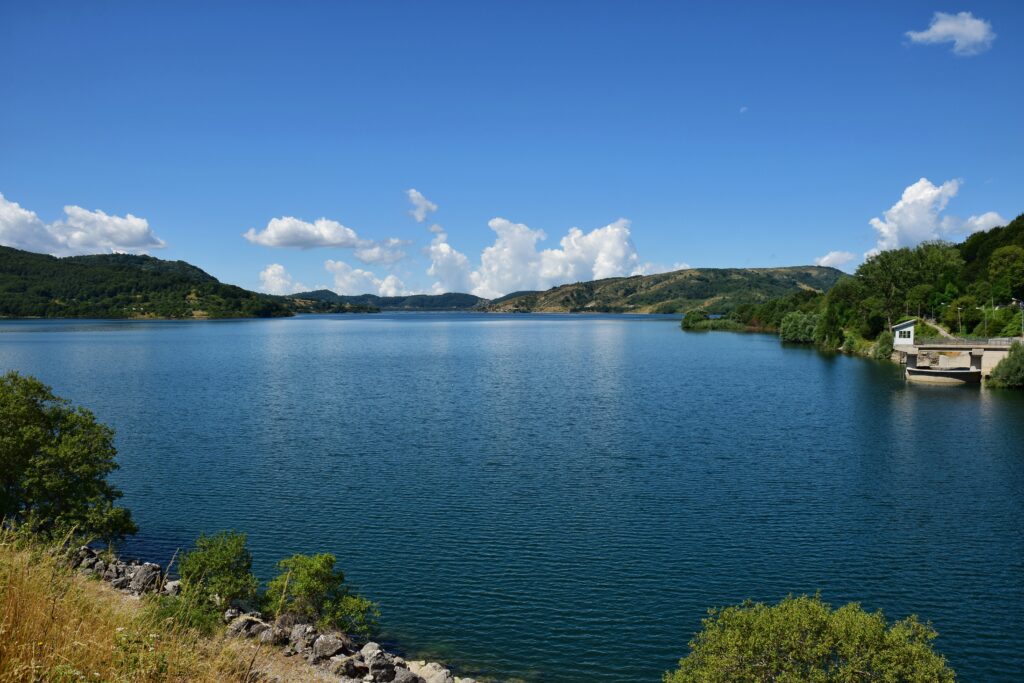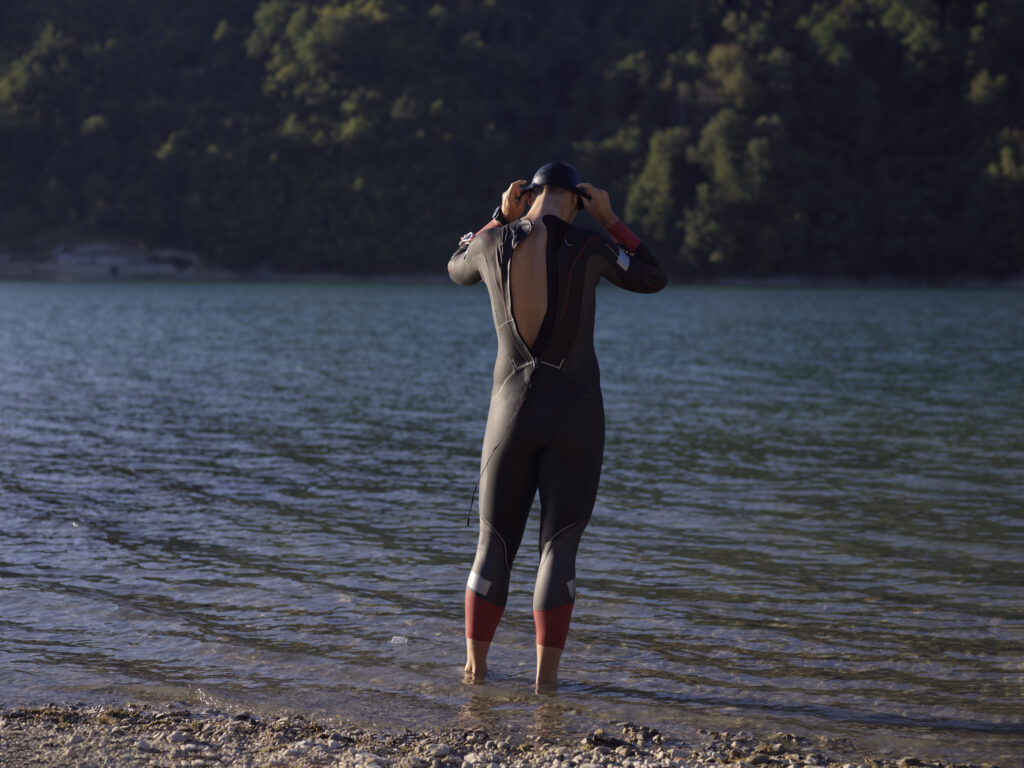Devon and Cornwall boast some of the UK’s most stunning coastlines, perfect for those seeking a refreshing sea swimming experience. I’ve explored countless beaches along these beautiful shores and discovered several gems that offer clear waters and safe swimming conditions. The best beaches for sea swimming provide a combination of clean water quality, gentle slopes for easy access, and lifeguard services during peak seasons.
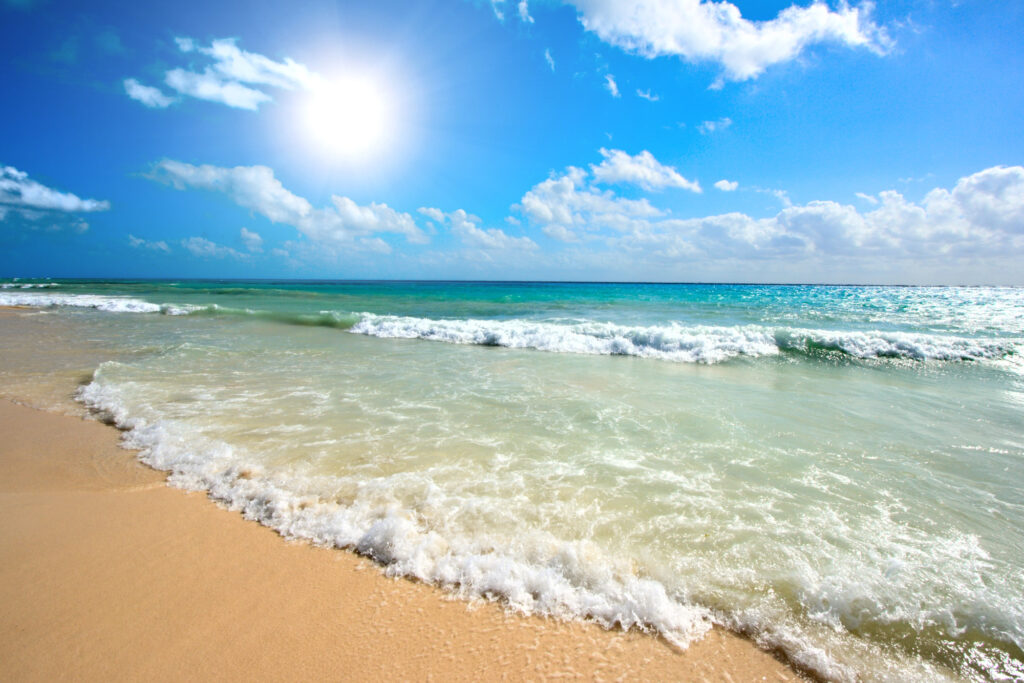
When looking for the ideal swimming spot in these southwestern counties, it’s important to consider tides and local conditions. Many beaches in Devon and Cornwall have distinctive characteristics that make them particularly suitable for different types of swimmers. From sheltered coves that are perfect for families to more open beaches with invigorating waves, there’s something for everyone who enjoys the therapeutic benefits of sea swimming.
1) Summerleaze Beach

Summerleaze Beach in Bude stands out as one of Cornwall’s premier sea swimming spots. This Blue Flag award-winning beach offers expansive sandy shores just a short walk from the town centre, making it both beautiful and convenient for visitors.
The beach’s crowning jewel is the iconic Bude Sea Pool, a semi-natural saltwater pool dating back to the 1930s. This protected swimming area provides a safer alternative to open ocean swimming, especially for families and those less confident in the surf.
For swimming enthusiasts, RNLI lifeguards patrol seasonally, adding an extra layer of safety. Beyond swimming, the beach offers excellent surfing, kayaking, and paddleboarding opportunities for all skill levels, making it a versatile destination for water lovers.
The surrounding sand dunes create a unique ecosystem worth exploring before or after your swim. With ample parking and nearby facilities, Summerleaze makes for a hassle-free day at the seaside.
Rating: 4.7 (3765 reviews)\
Location: Summerleaze Cres, Bude EX23 8HN\
Contact: 01288 354240\
Website: Visit Website
2) Bigbury Beach
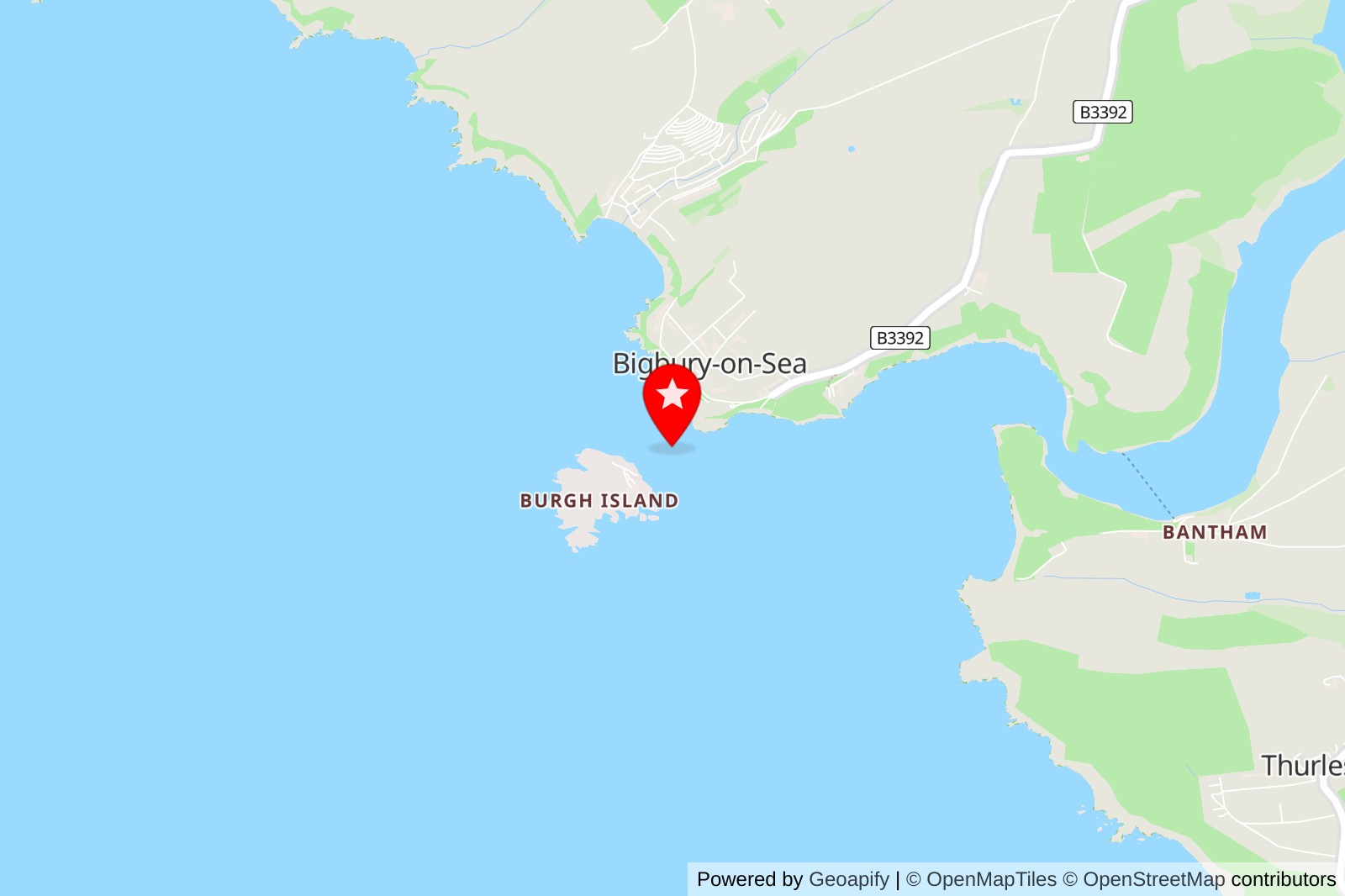
Bigbury Beach is a stunning sandy beach located in South Devon. It offers excellent swimming conditions with clean, clear waters that are perfect for a refreshing dip. The beach is spacious enough that even on busy summer days, there’s plenty of room for everyone.
I found the most unique feature of Bigbury is Burgh Island, which you can walk to at low tide. When the tide comes in, you can take the quirky sea tractor if you’ve ventured over to the island. This adds a fun dimension to your swimming experience, with different areas to explore as the tides change.
Swimming at Bigbury is generally safe, and lifeguards patrol during peak seasons. The gentle slope into the water makes it ideal for swimmers of all abilities. The beach also has several rock pools that appear at low tide, perfect for a gentle paddle or exploring marine life.
The facilities at Bigbury are excellent, with toilets, showers, and places to get food and drinks nearby. Parking is available close to the beach, though it can fill up quickly during summer weekends.
Rating: 4.8 (1418 reviews)\
Location: Bigbury-on-Sea, Kingsbridge TQ7 4BG
3) Hele Beach
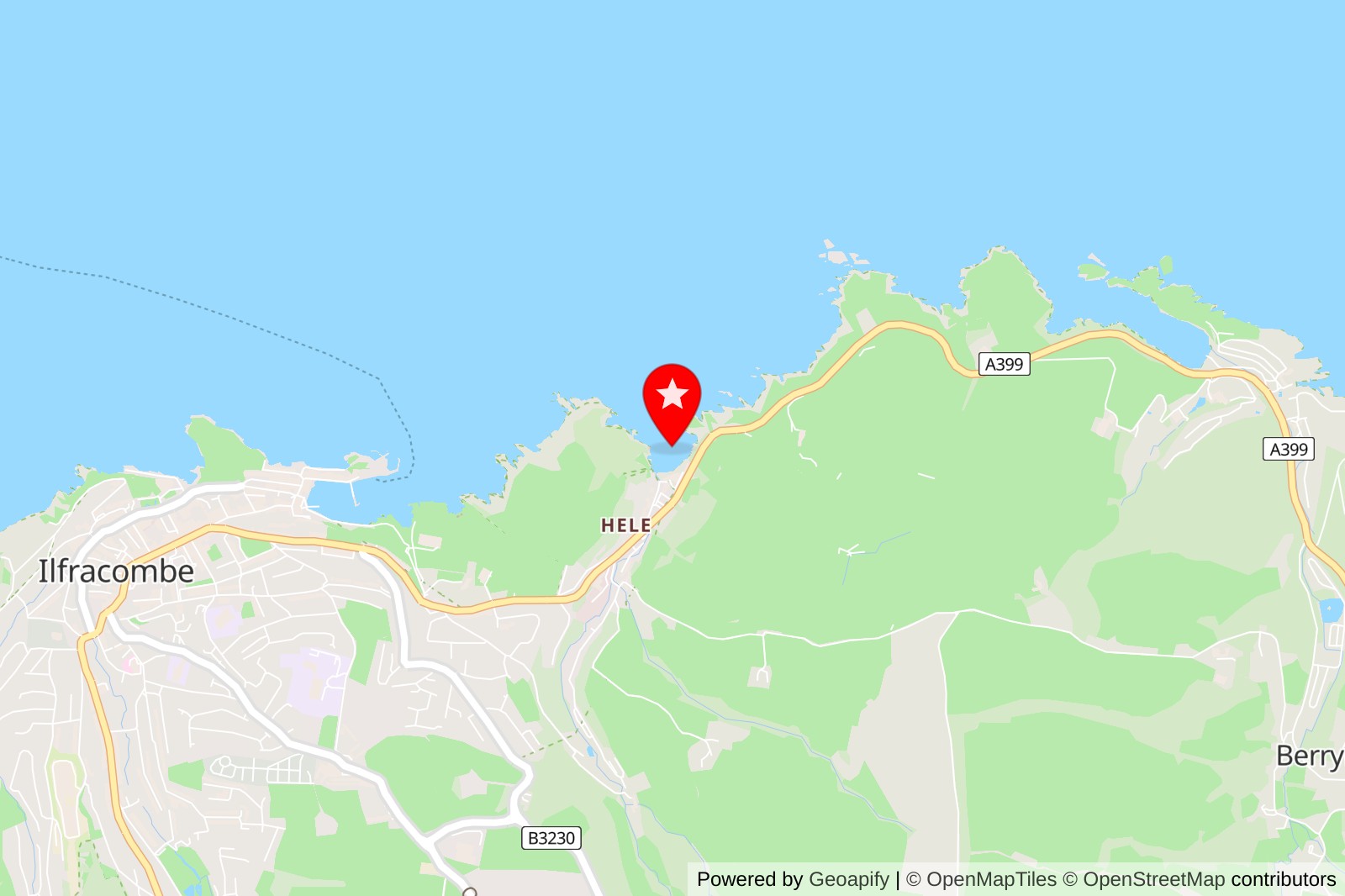
Hele Beach is a charming small cove located in Ilfracombe, Devon. This hidden gem offers a perfect mix of sand and shingle, making it ideal for sea swimmers looking for a quieter spot to enjoy the water.
One of the most appealing features of Hele Beach is the rock pools that emerge during low tide. These natural pools provide fascinating opportunities to explore marine life while offering sheltered areas for less confident swimmers.
I find this beach particularly special because of its intimate size. Unlike larger, more crowded beaches in the region, Hele Beach provides a more peaceful swimming experience where you can truly connect with the natural coastal environment.
The surrounding area offers spectacular views of the Devon coastline, making it worth visiting even if you’re not planning to swim. The beach is relatively accessible and has become a favourite among locals who appreciate its understated beauty.
Rating: 4.5 (88 reviews)\
Location: Ilfracombe
4) Blackpool Sands
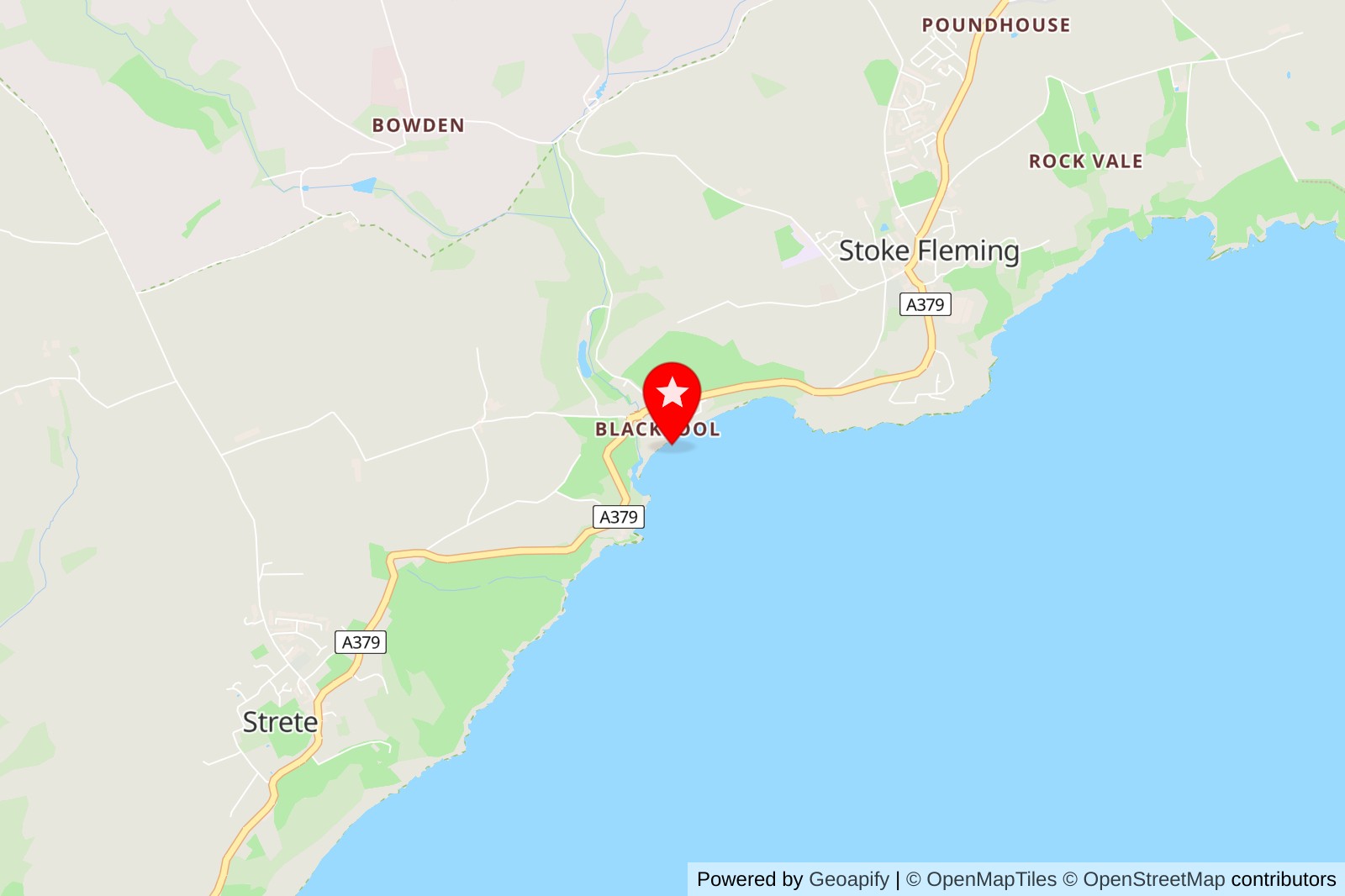
Blackpool Sands is one of Devon’s most stunning beaches, tucked away in a sheltered bay near Dartmouth. Despite its name, it’s actually a shingle beach rather than sandy, though this gives the water its remarkable blue-green clarity that makes it ideal for sea swimming.
The beach is privately managed and kept immaculately clean, making it a cut above many other swimming spots in the region. During summer months, lifeguards patrol the waters, providing reassurance for less confident swimmers like myself.
I particularly love the facilities here that enhance the swimming experience. There’s a bathing raft anchored offshore that provides a wonderful destination to swim to, and the beach offers kayak hire for those wanting to explore the coastline from a different perspective.
After a refreshing swim, the Venus Café serves excellent local food right on the beach. The café uses locally sourced ingredients, and I’ve found it’s the perfect place to warm up with a hot drink after braving the sea.
Rating: 4.6 (3882 reviews)\
Location: Blackpool Valley Road Nr, Dartmouth TQ6 0RG\
Contact: 01803 771800\
Website: Visit Website
5) Seaton Beach
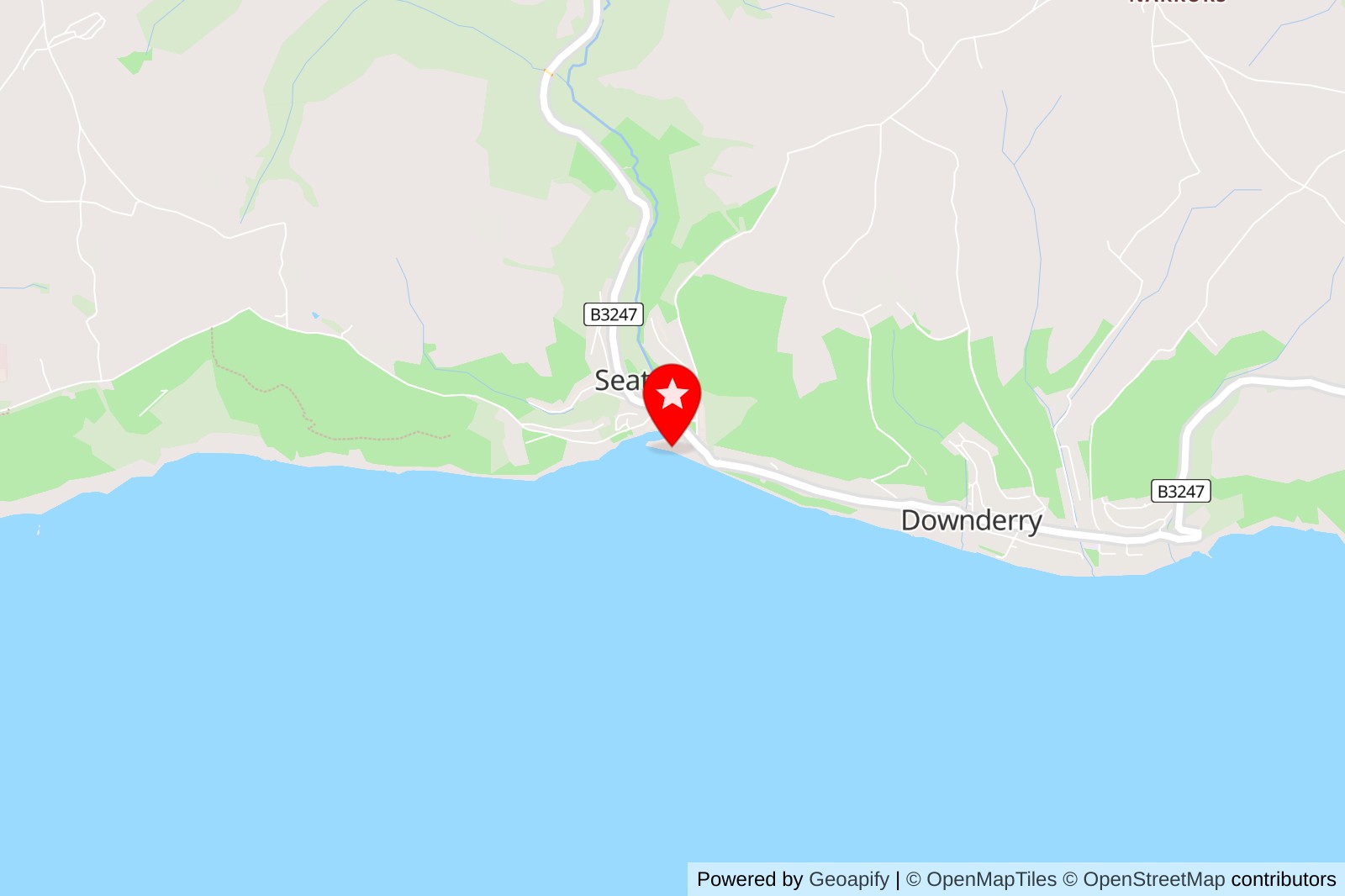
Seaton Beach is a spacious grey sand beach in South East Cornwall that’s perfect for sea swimming. The beach is popular with families and offers a relaxing environment with its nice green area behind the shoreline.
At low tide, the beach stretches all the way to Downderry Beach, giving swimmers plenty of space to enjoy the water. However, it’s important to note the safety warnings about strong undercurrents and large breaking waves.
The beach has excellent amenities with cafés and a beach shop nearby. For those who enjoy a walk before or after their swim, the Seaton Valley Countryside Park offers pleasant trails to explore.
I particularly like that this beach has level access from the road, making it easy to reach the water. The beach can get busy during hot summer days, so arriving early is recommended if you want to secure parking.
Rating: 4.5 (3165 reviews)\
Location: Deviock, Torpoint PL11 3JQ\
Website: Visit Website
What Makes Devon and Cornwall Ideal for Sea Swimming
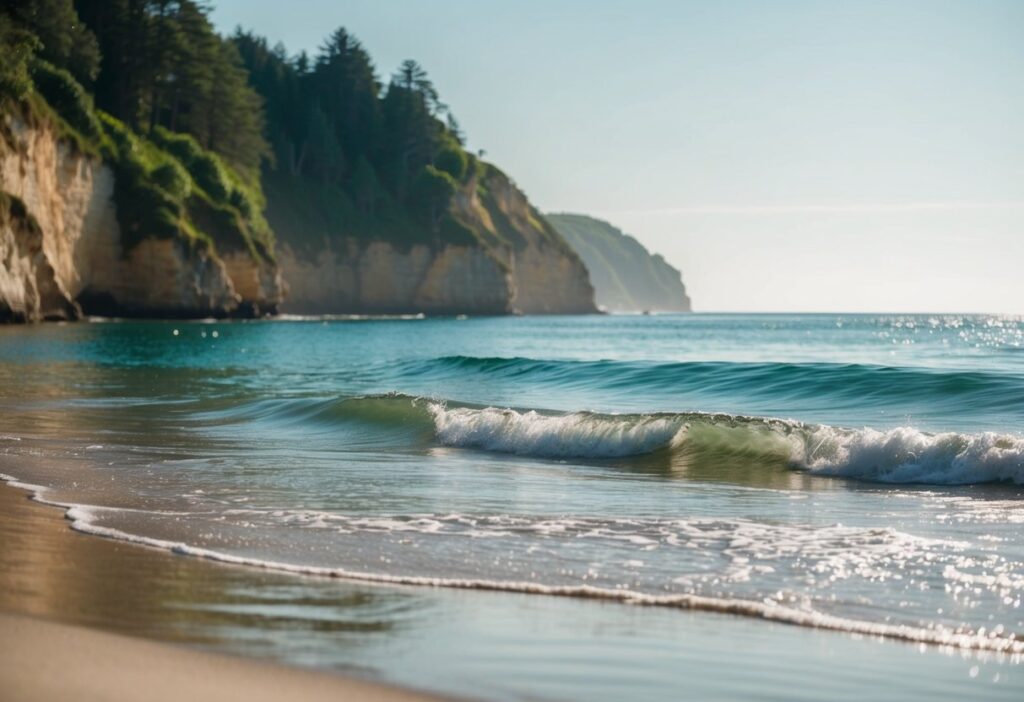
Devon and Cornwall provide some of the UK’s most spectacular swimming environments, with pristine waters and diverse coastal landscapes. These southwestern counties offer unique conditions that attract sea swimmers year-round.
Water Quality and Safety
The southwest peninsula boasts exceptional water quality, with many beaches earning Blue Flag status for cleanliness. I’ve found that Devon and Cornwall’s beaches regularly feature in the Marine Conservation Society’s “excellent” ratings for water purity.
Most popular swimming beaches are monitored during the summer season, with many featuring RNLI lifeguards from May to September. This safety presence is particularly valuable at beaches with larger waves that attract surfers and swimmers alike.
Several beaches offer sheltered swimming conditions:
- Natural coves and bays that block strong currents
- Beaches with gradual depth increases
- Areas with protective headlands minimising rip currents
The region’s varied coastline means I can always find suitable swimming spots regardless of experience level.
Climate and Tidal Conditions
Cornwall and Devon benefit from milder temperatures than much of the UK, thanks to the warming influence of the Gulf Stream. Water temperatures typically range from 9°C in winter to a pleasant 18°C in late summer.
The peninsula’s position creates diverse tidal conditions:
- North coast: More dramatic tides and larger waves from the Atlantic
- South coast: Generally calmer waters with more sheltered swimming spots
I’ve noticed the south-facing beaches warm up quicker in summer, making them ideal for extended swimming sessions. Cornwall’s position jutting into the Atlantic creates enormous waves at certain beaches, perfect for those wanting more challenging conditions.
Tidal ranges can be significant, transforming beaches throughout the day and creating temporary swimming lagoons at low tide in some locations.
Essential Tips for Safe Sea Swimming
Sea swimming requires proper preparation and knowledge of beach conditions to ensure safety. Following these guidelines will help you enjoy a worry-free experience in Devon and Cornwall’s beautiful waters.
Recommended Equipment and Gear

A high visibility swimming hat is essential for sea swimming as it makes you visible to boats and lifeguards. I always recommend wearing a brightly coloured swim buoy that provides flotation support if needed.
A well-fitted wetsuit is crucial, especially in colder months, as Devon and Cornwall waters can be chilly even in summer. This helps prevent hypothermia and extends your swimming time.
Don’t forget waterproof sunscreen, even on cloudy days. The water reflects UV rays, increasing your exposure.
For regular sea swimmers, I suggest:
- Neoprene gloves and boots for colder water
- Swim earplugs to prevent swimmer’s ear
- A waterproof watch to track swimming time
- A whistle attached to your swim buoy for emergencies
Understanding Local Beach Flags and Signs
Red and yellow flags indicate areas supervised by lifeguards where swimming is safest. I always look for these flags when visiting a new beach. A solid red flag means dangerous conditions – never enter the water when this is displayed.
Black and white chequered flags mark areas for non-powered watercraft such as surfboards and paddleboards, not for swimming.
Beach information boards provide vital details about local hazards, tides and currents. I check these before every swim as conditions can change daily.
Understanding rip currents is essential. They appear as calm patches between breaking waves. If caught in one, swim parallel to the shore rather than fighting against it.
Always check tide times before swimming. Incoming tides can cut off return routes and create stronger currents.
Planning Your Visit
Proper planning makes all the difference for an enjoyable sea swimming experience in Devon and Cornwall. Weather, tides and seasonal facilities can significantly impact your visit.
Best Times of Year for Sea Swimming
The optimal swimming season runs from June to September when water temperatures reach 15-18°C. August typically offers the warmest sea temperatures, hovering around 17°C in most locations.
I recommend checking local tide times before your visit, as swimming is safest during slack tide (the period between high and low tide). Early mornings often provide calmer waters and fewer crowds, especially at popular beaches in Devon and Cornwall.
During winter months (November-March), sea temperatures drop to 8-10°C. If you’re brave enough for winter swimming, proper cold-water gear is essential – a thick wetsuit (5mm+), gloves, boots and a hood.
Access and Facilities at Popular Beaches
Most top-rated beaches offer car parks, though these fill quickly during summer holidays and bank holidays. I suggest arriving before 10am or after 3pm to secure parking.
Facilities vary significantly between beaches. Larger destinations like Woolacombe and Perranporth provide:
- Public toilets
- Cafés and food kiosks
- Equipment hire (wetsuits, boards)
- RNLI lifeguard services (seasonal)
Smaller coves often have limited or no facilities. Many beaches in Cornwall have seasonal lifeguard coverage, typically from May to September. I always check the RNLI website for current lifeguard schedules before planning sea swimming sessions.
Accessibility varies dramatically – some beaches require steep descents down cliff paths while others offer level access from car parks.

